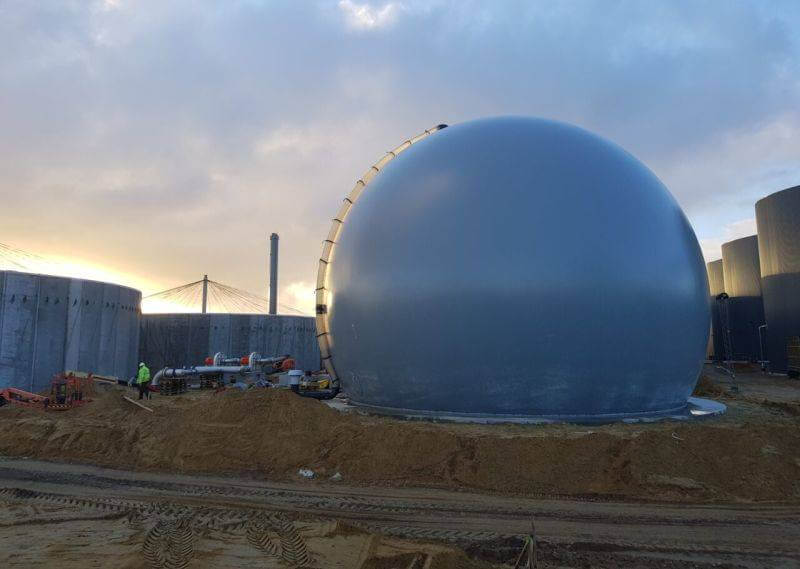
Introduction
Many people in developing nations tend to use biogas as a reliable source of energy. Biogas is a relatively safer energy source and a more sustainable substitute to main grid power in the regions where it’s unreliable or unavailable. The traditional wood collection is the main technique used to obtain fuel – but it’s time-intensive for those in charge of collecting it and also harmful to the environment.
Therefore, this explains why biogas is gradually taking over in conventional households. This post will shed light on the reasons to have biogas storage, why domes are largely preferred, as well as the advantages and disadvantages associated with using domes.
Reasons Why You Need Biogas Storage
The choice of your ideal biogas storage system will heavily influence the safety and efficiency of your biogas plant. You need to store biogas mainly for two reasons namely:
- On-site storage for later use
- Storage to off-site distribution stations before and after transit
In addition, biogas storage systems can adjust the variations in biogas consumption and output, as well as the changes in volume due to temperature.
Biogas Domes – What are They?
They are made up of a digester and a stationary, non-movable gas holder that is placed on top of it. When the gas production commences, the slurry is transferred to the compensating tank. What’s more, domes are cost-efficient as they don’t take much to purchase or maintain. They also are simple to operate because they have no moving parts.
Domes don’t have any rusting elements which means that they can last for 20 years or even more. The plant is constructed underground which saves space and protects it from any damage.
Advantages of Domes
- If well-constructed, fixed dome plants are highly durable
- Purchasing and constructing biogas is inexpensive which makes it sustainable
- The digester saves space as it is positioned below the ground where it’s further kept safe from temperature fluctuations
- The absence of no rusting or moving components means that sustaining the plant will be relatively easier and more affordable
Disadvantages of Domes
- Gas leaks may happen
- The quantity of the produced gas cannot be seen immediately
- If gas pressure fluctuates, it may complicate gas utilization
- Constructing the plant requires expertise, careful planning, and bedrock excavation which could be quite difficult
Why Domes are Popular in the Market
Biogas storage systems tend to undergo immense stress; hence, it’s crucial to consider factors such as service life, gas tightness, and environmental concerns. Domes are constructed from simple materials that are chemically stable, have great kink resistance, and meet multiple mechanic criteria. This is the main reason why they’re the most preferred biogas storage system as compared to the other options in the market.
Final Thoughts – Select the Right Storage System
Besides biogas dome, there are several other alternatives available in the market presently. You can either select a double membrane or an air system double-membrane cover. You’ll make your choice depending on several factors, including budget and location. However, if you’re looking for the next best option, then you should consider choosing the biogas membrane.
The biogas membrane is considered a symbol of excellence. It is equipped with specially constructed gear that can produce high-quality welded seams. The resulting welded seams are of high quality, and that is why you should consider acquiring this biogas storage system.

Founder Dinis Guarda
IntelligentHQ Your New Business Network.
IntelligentHQ is a Business network and an expert source for finance, capital markets and intelligence for thousands of global business professionals, startups, and companies.
We exist at the point of intersection between technology, social media, finance and innovation.
IntelligentHQ leverages innovation and scale of social digital technology, analytics, news, and distribution to create an unparalleled, full digital medium and social business networks spectrum.
IntelligentHQ is working hard, to become a trusted, and indispensable source of business news and analytics, within financial services and its associated supply chains and ecosystems











